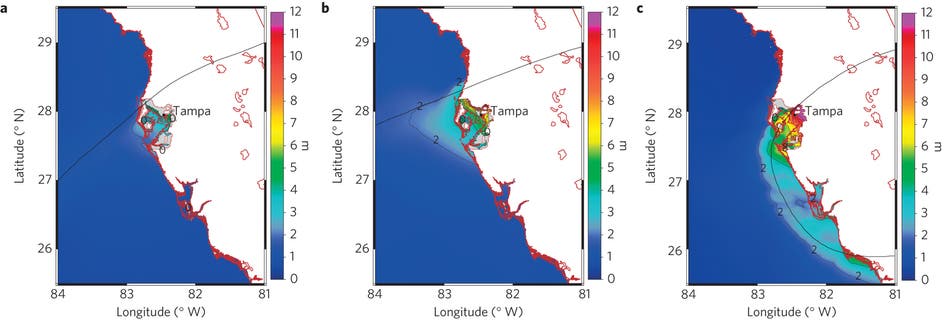A new studied explore the possibility of unprecedented catastrophic storms – storms so bad that there’s no recorded precedent in the past 10,000 years. According to the study, the chance for such an extremely rare event to occur in this century are drastically increased by climate change.
‘Black swans’ is an umbrella term for every event that is extremely unlikely and impossible to predict. ‘Grey swan’ is, similarly, a term used for events which are again extremely unlikely, but might be predicted based on an analysis of past events. A new study takes this concept into the realm of weather and climate, finding that global warming might sharply increase the odds of grey swan hurricanes over the 21st century. The results are in accordance to previous studies which found that tropical cyclones (hurricanes) will become more severe as the planet heats up.
None of the recent storms, bad as they have been, compare to the type of storms they analyzed. Katrina, Sandy, Haiyan, had massive impacts, but they wouldn’t qualify as grey swans. Ning Lin, a civil and environmental engineer at Princeton University, and Kerry Emanuel, a hurricane and climate researcher at MIT wanted to look at bigger storms, and they set out to calculate the odds of storms that don’t appear in the record for a given location, but which could theoretically appear based on the local conditions. This is how they defined grey swan storms.
It’s an interesting perspective, one that hasn’t been discussed in previous literature.
“I think it’s a great, great question to ask,” Jim Kossin, a hurricane-climate researcher with the National Oceanic and Atmospheric Administration who wasn’t involved with the study, said.
They used a model pioneered by Emanuel which places a high-resolution hurricane model inside a coarser general climate model and runs it several thousand times to see all the storms that could theoretically take place there. They focused specifically on some places: Tampa, because of its large population; Cairns, Australia, because it is in a cyclone-prone area and in the Southern Hemisphere; and the Persian Gulf (with Dubai), where no hurricane has ever been observed.
What they found was that general warming drastically affects the odds of such a storm happening. For Tampa, even moderate warming increased the likelihood of such a storm happening from once in 10,000 years to once in 2,500 years (or even once in 700 years, depending on how much the planet warms). The Dubai case was even more surprising: even though there was never a massive storm in recent history there, if the planet continues to warm, a storm with up a surge up to 23 feet could take place (though the odds still aren’t very likely, it becomes a plausible possibility).
“Those results are quite surprising,” Lin said, given that no storm has ever been observed in the Persian Gulf “and we got very intense storms there.” (While the Gulf’s waters are very warm, a boon to hurricanes, the area’s low humidity and high wind shear aren’t conducive to storm formation.)
These are quite alarming results, but they are still results which may help officials better prepare for such possibilities. When we consider that they didn’t even use rising sea levels in their models (which also increases the likelihood of violent storms), things become even more threatening. There’s always an uncertainty when working with climate models, but we can draw a line and clearly state that global warming will certainly make freak storms more likely, and that’s not a good felling.
Journal Reference: Ning Lin & Kerry Emanuel – Grey swan tropical cyclones. Nature Climate Changedoi:10.1038/nclimate2777










